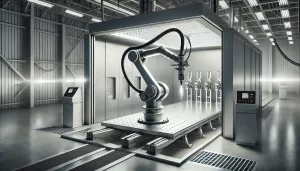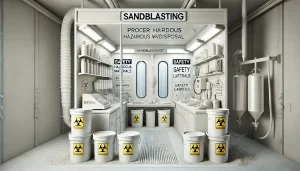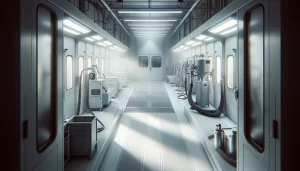What do you wear when sandblasting?
Sandblasting may be highly dangerous, so you should be aware of that. When dealing with it, you shouldn’t be macho and disregard the need for safety. When I was an adolescent mechanic working on vehicles, I used to be like this. Because of recent developments in sandblasting safety technology, employers now have access to a wide variety of abrasive safety equipment. Sandblasting safety gear is accessible and ranges from premium respirators to robust safety overalls, boots, and gloves.
Before you begin sandblasting, be aware of the safety precautions listed below, along with information on the damage that can be done.
Related: What You Need to Know About Sandblasting
Dust Masks
Even though the abrasive dust may not appear to be harmful, it could be. What I’m referring to is contracting silicosis. At the very least, you must wear a dust mask. The dual respirator filter mask is preferable, although an inexpensive dust mask may suffice. It’s preferable to nothing. When an abrasive touches the surfaces of goods, it forms harmful dust that, when inhaled, damages your lungs. This is also related to silicosis prophylaxis.
When operating, only use authorized blasting abrasives. Play sand contains a high concentration of silica, which can cause severe lung damage. It’s not worth it, and I strongly advise you to read my post on it here. You’ve been forewarned.
Safety Goggles
You should put on protective goggles or glasses, and you may wish to do so even while using a sandblasting cabinet. Wear them, especially while you are blasting inside or outside. In these circumstances, air-supplied helmets are safer for you.
Protective Clothing
When operating, it is essential to wear long-sleeved shirts and long pants. You never know when a hose will blow up or explode. In the past, my hose would shoot out of the bottom of my pressure pot sandblaster, and the torrent of high-powered abrasive would have hit me. This would be considerably more dangerous if it got into your eyes. If you have access to professional sandblasting suits, I would strongly advise you to use them.
Knowledge!
All of this gear would be useless if you didn’t equip yourself with proper KNOWLEDGE about the necessary precautions for being safe whilst sandblasting.
- Secure the environment
- Check your blasting equipment
- Ensure protective gear is available
- Use proper cleanup procedures
What kind of air compressor do I need for a sandblaster?
Sandblasting requires higher CFM versions of air compressors than the ideal ones. For minor sandblasting jobs, a compressor that can produce between 10 CFM and 20 CFM is appropriate. A compressor that can create a CFM of between 18 and 35 CFM is ideal if you want a more potent sandblasting experience, and a compressor that can produce 50 CFM or more CFM is best for industrial sandblasting.
CFM Requirements For Sandblasting
The higher the air compressor’s CFM rating, the better. Sandblasting is very taxing on the compressor. You’ll need a lot of airflow all the time, especially if you don’t want to pause and let the compressor catch up before you start sandblasting again.
PSI that you need
Looking at the chart (above), we can see that the minimum CFM for an air compressor, utilizing a tiny eighth-inch nozzle, is roughly 20 CFM, which is rather high. The recommended PSI for operating a sandblaster is 90 psi (in most circumstances). The cost of compressors with that kind of CFM output is often rather high. When sandblasting, the air tank will normally empty, so you want to keep it at a working PSI of between 50 and 90. You will need to stop blasting and wait for the compressor to catch up if you go below 50 PSI since there just won’t be enough pressure to remove the material in a sufficient amount.
Using A Smaller Compressor Is Possible!
You can use a smaller air compressor that is less expensive than what the chart says, one that can produce 5 to 6 CFM and will cost you between $300 and $500.
Consider your power source also.
If you are considering purchasing an electric air compressor, you should consider the type of power source you currently have at your home. There are certainly some people out there who can operate tools off of a 240 V supply as well, but that is more uncommon and something you need to take into consideration. I think that most people only have 120 volts to work with. They do produce gas-powered air compressors with sizable CFM outputs, but they are frequently more expensive than electric units and cost between $500 and $1000 for a device with the CFM rating that this year’s sandblasting industry was seeking.
Do you need a respirator for sandblasting?
Finally, do you need a respirator? Sandblasting rooms contain the hazard and keep nearby workers safe. However, because blasters must work inside the enclosure in high concentrations of dangerous blasting material, such chambers may increase their risk. To lower these concentrations and improve visibility, blast rooms must be aired. Any blaster working within a blasting room must wear the provided air respirator.
Need to find a professional who knows what they are doing? Our factory-trained installation crew can get your new Booth installed correctly and quickly. This is Paint Booth’s specialty! You can rest assured that your new equipment will be safe & operational in no time.
Need more information about Sand Blasting Booths? Request a Quote




